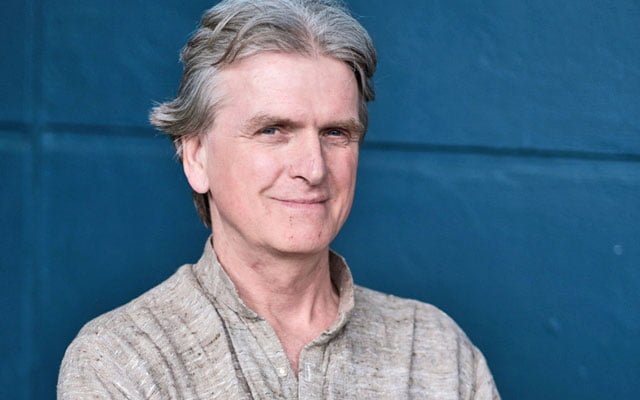
Marcus Corbett: “From the moment I returned from India, that passion was with me.” Photo: Oliver Holms
We catch up with a songwriter whose distinct style merges western acoustics with Indian Classical music to create something unique
Marcus Corbett is a singer, acoustic guitarist and composer based between Marlborough, UK and Pune, Maharashtra, India. These two distinct cultures have come together within his music, leading to his distinct hybrid sound. To these novice ears his skill lies in filtering the Indian influences so that they are always prominent but never slip into pastiche.
His latest album Every Little Spirit was made in collaboration with musicians such as the tabla players Nitin Gaikwad and Sharapanappa Guttaragi, as well as Oxford-based cellist Bruno Guastalla, and finds Corbett honouring the musical traditions he loves whilst continuing his voyage into the unknown.
We decided to chat to Marcus about his unique work in order to get a better understanding of the world of Indian Classical…
Where does your love of India and its music stem from?
“If I knew that then perhaps the allure would diminish. I first heard North Indian Classical music while at school in musical appreciation classes aged 13. Sitar was the instrument and the clarity and weight of tune embedded itself in me, though most of the other students took a more negative attitude….citing screaming cats and the like.
“India and Britain have a shared history and a long complex relationship has endured. My grandfather served in India. My experience was that India was held in great esteem, and for romance and metaphysics there were no peers. A visit to the library, where I encountered some of the basic philosophical tenets of Hinduism, reinforced the desire to go and see India for myself. The words in the library were simple threads that described the underpinning of reality, and the music I had heard also seemed to inquire of the same, while drawing melodic threads exquisitely carved in the air.
“Then, aged 18 I travelled overland to India. That slow arriving to a destination that was both physical and psychological was made real in a town beside the river Ganga where I heard a public masterclass given on Hindustani Vocal. Sitar and sarod can be compared to the guitar by westerners. Bansuri flute is so mellifluous that who could possibly object. But vocal? There are few landmarks to help one whose home is so far away feel secure. How could I have been prepared for the information passed on by this means?
“It deals in the fundamentals of music. It has another name – ‘Shastriya Sangeet’ – knowledge music. With its feints, ‘meend’ and decoration it has for me a siren call, but connects to something we all have in common. This perhaps is the stem from which my love of India and its music comes – that which is common to us, which we cannot but share.”
When and how did that passion start to inform your own music?
“Blues figured large during adolescence though I never learned the licks. Prior to visiting India, John McLaughlin’s Desert Song on Stanley Clarke’s album School Days had shown me the value of space and silence in music in which the dynamic of acoustic guitar could gain traction. I sensed a direction I might take.
“From the moment I returned from India, that passion was with me but I was slow to embrace something that surely would separate me from my immediate environment. These were deeply embryonic times as my guitar playing developed and I naively borrowed in spirit from my recent travels. It wasn’t that I lifted directly from particular ragas, but more a naive grasping of mood and technique.
“My knowledge was less than minimal but my instinct strong. In this way the virus stayed with me for ten years, during which time I played with Congolese outfits, Malaika and Intelligencia Britannica, before I realised it was now or never and began to learn Hindustani Vocal with Gauri Bapat at the Bharatiya Vidya Bhavan in London.”

Marcus Corbett (left) with his ensemble: “I want to avoid the comfort of cliché in performance”
Do you find it to be a natural fit with western acoustic guitar music?
“A fundamental problem here is that Indian Classical music does not use chords – they use untempered tuning. We use tempered tuning which allows the unfettered use of chords and change of key. So no, I do not find it to be a natural fit with western acoustic guitar music. It can not be a natural fit with western music. It has been a case of loosening one’s boundaries, letting go of some moorings and keeping others. Setting the scene in such a way as to allow room for convincing input from the Indian side and gracefully making this the predominant rule.
“Tabla, precisely because it has such a beautiful, strong, but static harmonic element to it can be used more flexibly in conjunction with guitar, but to me, the bell must ring true. To find a ‘natural fit’, a rhythmic sentence that gives the ‘lay’ (the rhythm part of a piece of music) within a song it’s raison d’être and function, is a beautiful problem. I want the tabla to shine and to have enough scope to use an extensive vocabulary. I learned tabla in order to have an informed opinion, so as to be more aware of what might work. I want to avoid the comfort of cliché in performance and also presumption on the part of the listener.”
What were the most obvious differences between the two genres that needed to be reconciled?
“The most obvious differences between the two genres come about because of the tuning issue mentioned above. This issue is essentially un-reconcilable, however I hope one can still allude to a musical heartland though it lies out of reach, and occasionally allow the music to veer to either side of the cultural spectrum, thereby in fact highlighting the differences. In this way one can contrast different ways of creating musical meaning. Perhaps it is not a case of reconciling the genres but where possible to allow one to support and frame the other.”
How do you begin constructing the intricate layers which form your songs?
“I have to find my starting point. This may be realised in a moment. It may tell the whole story in one breath, it may be an introduction to the song and it may contain the seed of all that follows. It may be being in a particular state of mind and the plucking of a string – the beginning of a conversation with an unseen companion.
MY WAY OF SONG CONSTRUCTION IS RARELY PREMEDITATED
“Once in the flow, musical accidents can occur and being in good practise promotes accidental discovery. My way of song construction is rarely premeditated, it is usually an organic process fuelled by instinct and pleasure in going through the doors that open up. A phrase with potential may reveal itself as one toys with the seed material. Something may come of this in two mins or it may take years of turning again and again to the phrase to find complimentary alternatives or progressions and for the good idea to evolve.
“I think the layers you refer to go both ways; laid over the seed material in the form of embellishment and variations, but I also think they get inside the phrasing and expand the scope from within. This is what is heard as ‘layers’ perhaps. The involvement of tabla has encouraged the guitar to speak from within a versatile complimentary framework. It has provided rhythmic stability, acting as an anchor and also as a foil.”
Were there any particular events which inspired the album’s theme?
“Would it help to know? Every Little Spirit is a reflection upon how our roots entwine with all life; that while life is a gift, for which acknowledgment and thanks are due, no one said the living of it was easy and how we instinctively seek release, to get set free from the emotional and physical turmoil of existence. ‘This could be you, this could be me…’.”
Get Set Free in particular seems to have a striking contrast between its modern lyrics and traditional Indian sound. Is that a technique you use consciously?
“The track Get Set Free is a seamless continuation from No Time. It’s actually the same song but divided in case of radio play. In this case the potential for ‘collision music’ is large. I think it’s the jagged guitar which, though easy on the ear, has the potential to signal alarm. In Get Set Free the violins combine with a natural unfettered Indian flavour while, I think, complementing the moods of the song. I could suggest that to ‘get set free’ from the physical constraints of life and to appreciate the company one has kept while on the road is a timeless theme not restricted to modern life.”
Do you hear the finished sound in your head at the beginning or does it appear throughout the writing and recording process?
“I don’t think I ever hear the finished sound at the beginning, except that in some sense there is nebulous somewhere I want to get to. For the most part, my stuff takes shape and gains weight via many rehearsals and private obsessive practice. I depend upon happy accident and a heightened awareness or sensitivity to allow the music to develop – so yes, it develops through the writing and recording process.”
What presents your biggest songwriting challenge?
“I’m slow at finishing stuff. Finding a focus point that allows me to say something, in other words make a song. Otherwise I am concerned when using tabla that it should seem natural and not contrived. Living in two worlds, that of India and the UK. Where are the touchstones in my world?”
Did you enjoy the opportunity to remix your song Castanets (on Strung Deep) and why did you feel the need to do so?
“I felt no need to remix it. It was an accidental discovery that happened while I was editing and mixing Castanets. A chance cycle discovered in this way created a great new perspective on the song. For me it was an irresistible digital accident. Sam Williams did in three days what would have taken me three months, and infinitely better. He added a fresh dimension to it with his vocals and yes I enjoyed it enormously. When you take a song to someone else for their input that’s what you get.”

Corbett: “I depend upon happy accident and a heightened awareness or sensitivity”
How much did Sam Williams help set the tone for the rest of the album?
“There was no deliberate intention to do so. The track Strung Deep was dealt with isolated from what was to follow. The longer tracks on the album require a little work to engage with. The track Strung Deep is, I think, infectious, addictive, and largely happy with an ‘up’ tempo and vibe. I tried to do the same with In Deed off the previous album Strung Deep. There is a longing common to all the tracks but that may be a common thread in all my stuff. It doesn’t so much set the tone for the rest of the album but as has been suggested to me, ‘build bridges into the subconscious of the unsuspecting’ allowing easier access to the rest of my stuff.”
Can you tell us a little about the other musicians who work on the album?
“When you’re feeling partly alien, but it is necessary to adapt, then it is wise to go with the flow. However I knew I wanted musicians that were capable in the classical sphere so that the improvisational element was instinctive. I wanted them to contribute in an Indian way, not try to play what seemed to them to be western. They all are also active
professionals.
“I have learned Tabla with both Sharanappa Guttaragi and Nitin Gaikwad. Through time they have also got to know my material. This has taken quite some time and is important if the tabla is to show its potential as an instrument. The hand has direct contact with the drum skin and each hand is different. So I wanted to celebrate this fabulous instrument that has within the percussive possibilities a strong harmonic function also.
“So first I sorted out the engine room of tabla and guitar and voice. If that were steady then I could think of adding more. I needed help to find musicians and Abijit Saraf, the owner of the studio I often use there, Musical Stars, has been a guiding light in Pune. By this route I met Milind Date who plays bansuri flute. This instrument has a smooth allure and can speak volumes, reinforcing the presence of moments that are suspended in time. He has had a wonderful classical training with Hariprasad Chaurasia and he also has good experience of, and interest in, much western music.
“Sanjay Upadhye, Anjali Singde-Rao and Sachin Ingale on violins have added the unpredictable in spades as they entangle themselves cinematically in the music. It is an adventure for them also as no one performance is the same as the previous. Bruno Guastalla on cello from Oxford is a great instinctive improviser. I needed a little more X factor for the song No Time and he did a wonderful job with some atmospheric drone and ethereal harmonics.”
Who would play alongside you in your dream band?
“I don’t have a ‘dream’ band to play alongside me other than the one I am trying to make flower. It needs musicians with time to listen and who are unafraid of making mistakes as we find a way of bringing to life the songs I have stumbled upon in ways which give space for India, in which the bell, inexplicably ‘rings true’.”
Are you still uncovering new sounds on your travels?
“I discover music in the UK that turns my head and stops me in my tracks. Stuff I would have probably heard if I’d spent more time here during the last ten years. I depend largely on others to play it to me. Music in the western world of harmony is a vast subject as it is in India. There is another album in the wings and with a little luck and push and shove more sounds are there to be conjured. I hope we can get there.”
Do you feel you have a responsibility or obligation to present Indian Classical music to an audience that isn’t overly familiar with it?
“I don’t feel an obligation but I can’t help giving a clue to, and a sometimes strong hint of, where that path leads; to tip my hat to a vast source of music whose territory lies before the invention of the piano and tempered tuning. It is still surviving the onslaught of a pretty low common denominator of music in advertising that accompanies the march toward perceived modernity in India. It is a music which has ways of expression perhaps unique to itself but which can be appreciated by anybody, once the switch turns on. It deserves to survive.”
Aside from your own work, what music would you recommend to listeners who wanted to explore Indian Classical further?
“As I have said, I am only hinting at the possibilities. If something in my music provokes curiosity then I would direct them, rather predictably, to some of the greats of the last 70 years for the real thing. With western ears in mind, start with Ravi Shankar and Nikhil Banerjee on sitar. The bansuri flute of Hariprasad Chaurasia. For western ears the vocal seems more outlandish and the tuning more foreign, but take a deep breath and try Jasraj singing Raag Gorakh Kalyan a soothing lullaby of music, and Bhimsen Joshi doing Raag Shuddha Kalyan. Both these may lead one into further unexpected musical worlds. For yet more diversity of excellence take a look at Malikarjun Mansoor. Doors may open. For female voices try Kishori Amonkar, Gangubai Hangal and Prahba Atre. A wealth of different styles above, with teachers who were themselves trained before the microphone was in common use.
What’s next for you?
“It would be great to be able to tour UK with the musicians I have rehearsed so much with to make this album. I am currently looking into possibilities for this, watch this space!”
Interview: Duncan Haskell
Every Little Spirit is out now. For more info, check out: marcuscorbett.commarcuscorbett.com



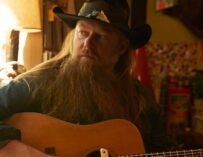

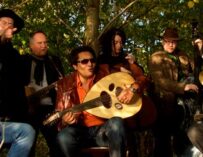
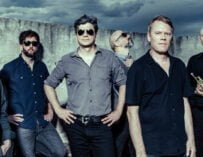

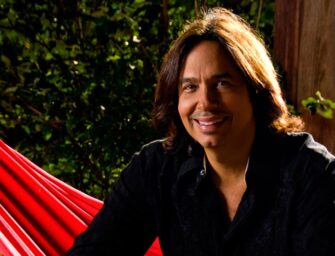
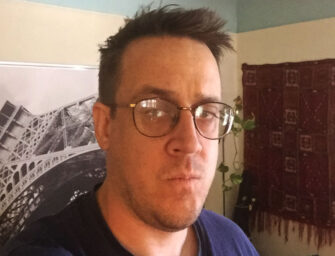

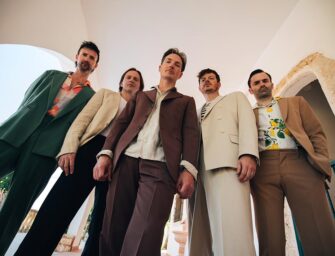

















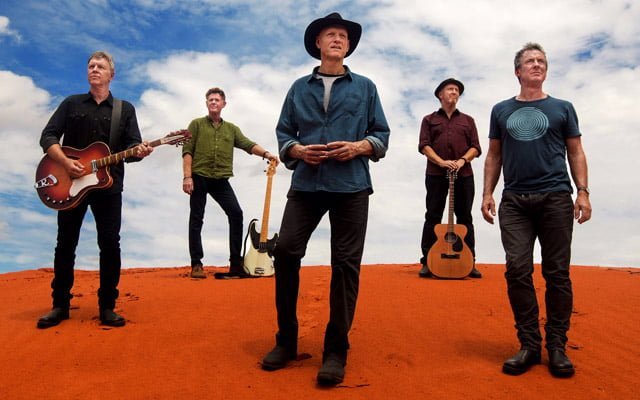





Unique style ans music…will eventually break through..!